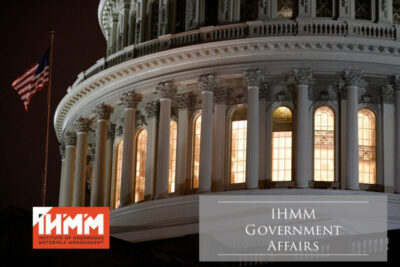The July 1, 2025, Federal Register
The July 1, 2025, Federal Register contains 4 areas of concern for IHMM. These issues are being referred to IHMM’s Government Affairs Committee for review and potential comment by the September 2, 2025, deadline.
1. Medical Evaluations in Respiratory Protection
OSHA proposes to remove mandatory medical evaluations for workers using filtering facepiece respirators (e.g. N95s) and loose-fitting PAPRs, on the basis that the burden of evaluation outweighs the benefits for these respirators osha.oregon.gov+15federalregister.gov+15federalregister.gov+15.
🗓: Comments are due by September 2, 2025.
2. Clarification of the General Duty Clause
A major reinterpretation is on the table: OSHA would narrow enforcement of Section 5(a)(1), stating they won’t cite inherently risky activities that are integral to professional, athletic, or entertainment occupations—if eliminating the hazard would fundamentally change the activity govinfo.gov+1federalregister.gov+1.
This is a significant shift, aiming to codify what was highlighted in legal disputes like SeaWorld.
3. Rescission of Coordinated Enforcement Regulations
OSHA (via the Department of Labor) proposes removing its coordinated enforcement rules, which currently guide how OSHA collaborates with other agencies federalregister.gov+14federalregister.gov+14federalregister.gov+14.
No detailed rationale has yet been released, but this could affect joint investigations or cross-agency protocols.
4. Construction Illumination Standards
OSHA is seeking comment on fully rescinding the construction illumination rules found in 29 CFR 1926.26 and 1926.56, citing that current lighting standards are “not reasonably necessary” to reduce significant risk federalregister.gov+1federalregister.gov+1.
Stakeholders are invited to share their data and perspectives by September 2, 2025.
Why These Proposals Matter
Respiratory Rule Change: May reduce compliance costs but raises questions about unintended health risks, especially in heavy-use environments.
General Duty Clause Limitation: Could set a precedent that limits OSHA’s reach into sectors involving “inherent risk,” potentially changing how safety enforcement is applied in high-risk professions.
Coordinated Enforcement Rollback: Might affect the efficiency and consistency of multi-agency workplace safety responses.
Illumination Standard Rescission: Could impact worker safety in poorly lit environments unless alternative light requirements are maintained at the discretion of employers.




1. Medical Evaluations in Respiratory Protection – Gene i belive this needs reevaluated becaue this will lead emlpoyers and employee to make make their own decisions on how to protect which needs oversight in my opinion.
2. Clarification of the General Duty Clause – This makes no sense why removing from high risk industry.
4. Construction Illumination Standards – Again this needs a rule and reference not set by an employer.
medical evaluations for workers using filtering facepiece respirators (e.g. N95s) and loose-fitting PAPRs is not that difficult when using a barrbe and measuring using a TSI Portacount. This was done for my fit testing of an N-95 disposable mask when I was a firefighter with Howard County Maryland. I fail to see the excessive costs when testing. If the mask would not be appropriate for the face of the user, the resultant occupational exposure to chemical or biological could result in a career ending injury.
The “utm_source” parameter in the links suggests that you used ChatGPT to write this. Nice try, “Eugene”.
Welcome to the 21st century.
Note the link to the Federal Register notice on one of these proposed rulemakings > https://www.federalregister.gov/documents/2025/07/01/2025-12235/amending-the-medical-evaluation-requirements-in-the-respiratory-protection-standard-for-certain?utm_source=chatgpt.com